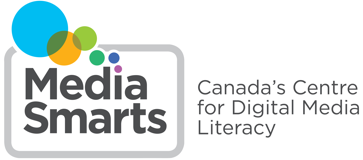In this lesson, students are introduced to concepts of gender identity and gender expression and learn about common portrayals of trans people in movies and TV shows.
Gender Representation
The new Ontario Health and Physical Education curriculum released this year by the Ontario Ministry of Education is the first major revision to the subject area in almost 30 years.
Popular culture, news media, and the way we consume violence on social media all play significant roles in shaping and reinforcing narratives of violence against women and diverse communities.
In this lesson, students discuss television programming aimed at children and how girls and boys are portrayed in it. Students illustrate what they dislike about portrayals of girls or boys and then create their own TV character who will counter the illustrated negative portrayals.
Sports media also contributes to the construction of masculinity in contemporary society.
There’s significant evidence that media education can counter unrealistic media representations of men’s and women’s bodies. For example, a 2015 study found that girls as young as Grade 5 who had received media literacy education in school had higher self-esteem and body satisfaction.
In this lesson students are introduced to the concept of "avatars" and share their experiences creating and playing avatars in video games and virtual worlds. They then create avatars using a program that is intentionally limited in terms of available body types and gender markers, first creating an avatar of their own gender and then of the opposite gender, and then discuss the program and relate it to representations of gender and body image in games and virtual worlds and in other media. Students then create avatars using a much more flexible version of the program and compare that experience to the more limited version. Finally, students use the more versatile program to create avatars that represent how they see themselves and how they would like others to see them online and reflect on the choices that went into creating them.
That Indigenous women are likely to be victims of violence is not news: Indigenous women aged 25 to 44 are five times more likely to suffer a violent death than other women in Canada.
